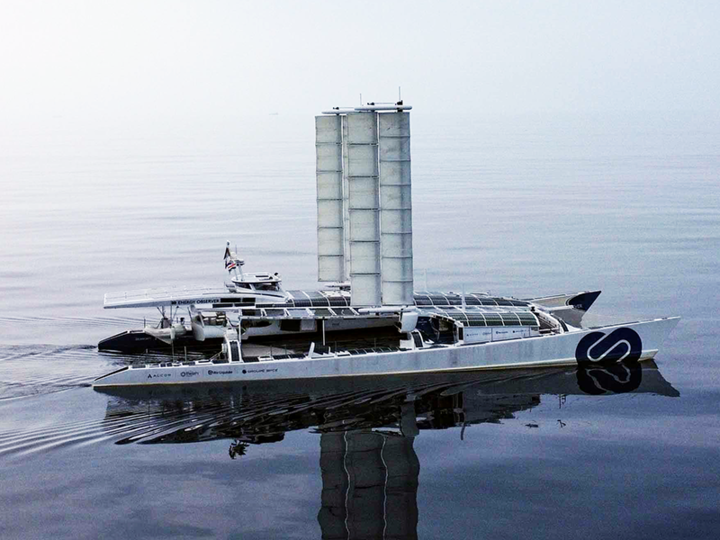We have found contents for ""
Sorry, we didn't find any results. Please ask another question.
Cette recherche n'a pas pu être traitée en raison d'un trop grand nombre de tentatives en peu de temps. Veuillez réessayer plus tard.
sur


The Energy Observer laboratory ship celebrates its 40th anniversary!
Wednesday, 26 april 2023
This former racing catamaran, which was launched in 1983 and became the first energy self-sufficient vessel in 2017 thanks to renewable energies, is a fine example of longevity and reliability.
Built in Canada by the celebrated aircraft manufacturer Canadair, this racing catamaran would write an incredible history comprised of new speed records, illustrious skippers at its helm, and victory in the celebrated Jules Verne Trophy in 1994. Transformed into a laboratory ship in 2017, it became the first energy-autonomous ship thanks to a mix of renewable energy and hydrogen. This technology has enabled it to sail a distance equivalent to several circumnavigations of the globe without generating any greenhouse gas or particulate emissions. Appointed as the first French ambassador responsible for promoting the 17 sustainable development goals set by the United Nations, it has also been entrusted with the mission of raising awareness of what is at stake in the energy transition.
Discover the incredible story of the Energy Observer laboratory ship.
As a partner of the Energy Observer laboratory ship, Groupe BPCE and its companies are also committed to increasing their contribution to the achievement of the UN’s sustainable development goals and helping in the struggle against climate change. In line with the Principles for Responsible Banking (PRB), Groupe BPCE is completing a strategic alignment of its activities with these objectives in order to join in the shared endeavor to ensure a better and more sustainable future for all.
Copyright : Energy Observer Productions@MDGVE